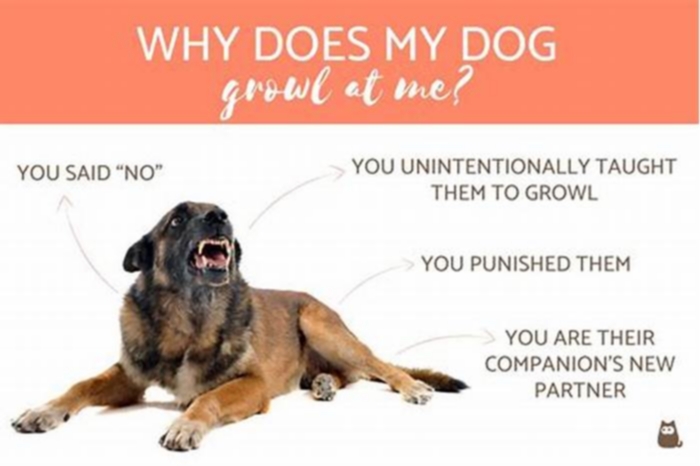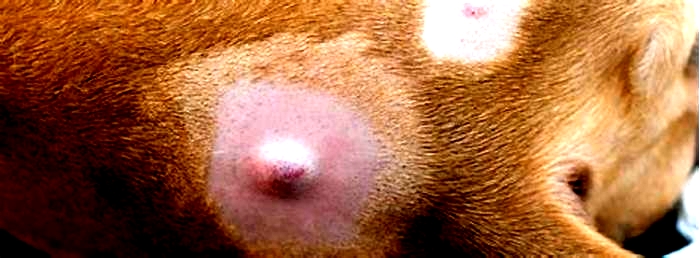Why does my dog cry when I touch her

Help! My Dog Yelps & Shakes For No Reason
Updated November 29, 2020
At a glance (details below)
Why Dogs Yelp, Cry or Shake Suddenly
- Acute pain is the cause of most yelping for no reason
- The majority of unexplained cases have neck or back pain
- It can happen when moving, when touched or even while sleeping
- Some of these dogs are at risk of IVDD
Now dive deeper
Im sorry about the comic picture above. Yelping is no laughing matter. Dogs can go onfor years before their suffering is recognised.
This is Chi Chi. I dont expect you to see it yet, but this dog is clearly in terrible pain. At home he would suddenly yelp without obvious reason, and shake all over. An internet search didnt give the right answer, so letsset the record straight
Why Dogs Yelp When Touched Or Moved
A dog that yelps without an obvious reason usuallyhas neck or back pain. Almost all other causes of yelping show extra symptoms such as limping or a poor appetite.
Its hardest to tell spinal pain from abdominal pain. Back pain often causes obviousreferred painto the abdomen, with a very tight, hard and painful belly. The clue is that dogs with spinal pain usually eat normally, as miserable and lethargic as they are. Dogs with abdominal pain are usually off their food.
Two other conditions that cause yelping might be sometimes also occur. The first is a severe ear infection. These dogs have got used to the pain but if you brush the side of the head they yelp.
The second is anxiety.
Signs Of Neck or Back Pain
Have a look at Chi Chi again. The first thing to see is that unusual head posture. No matter what, he keeps his head bent down and tries to only move his eyes to look around. This is a classic sign of neck pain.
Back pain is harder to see, but there is usually some degree of back arching. together with a rock-hard abdomen. For both necks and backs, dogs will be reluctant to move and probably not be jumping up at all. Remember, they should be otherwise fine.
Warning:dogs dont usually yelp while you examine them, so you can easily do a lot of harm without realising. All a vet looks for is the subtle difference in muscle tension between these dogs and normal patients. Heres why it matters
The Dangers
Visit our page onback problems and IVDDto see a dog who could easily have died if his owners didnt react properly. Many cases of spinal pain have unstable intervertebral discs that can rupture into the spinal cord. You need a vet to recognise which ones these are and take immediate action.
Vet care usually starts with a physical, a neurological exam and x-rays. This helps us decide whether your dog:
- can be treated just with medicines
- also needs cage rest (bed rest)
- needs immediate referral to a specialist surgeon
Thankfully, the third choice is the least common. It is necessary when there is a risk of:
- permanent nerve damage
- ongoing pain not easily managed by treatment
- repeated episodes.
Treatment of Neck & Back Pain
Just like spinal pain in people, not all cases are serious. The minimum treatment is good pain control, usually via anti-inflammatories and opiates or gabapentin. Owners are also asked to keep their dogs rested until better, and to use harnesses instead of collars for restraint.
Pictured is the Perfect Fit harness, which I recommend for these dogs.
Despite Chi Chis severe pain, he was suitable for home care and made a full recovery. Only time will tell if his problem will come back, and well be there if it does.
One last thing needs saying: most dogs with unexplained yelping are overweight. Regardless of the cause, quality of life almost always improves if owners can just be strong. Follow this link for positive, non-judgmental advice on weight loss in dogs. You wont regret it!
Note: Thanks for all the comments. These are now closed but you should find all the common questions answered if you scroll through them!
Have something to add? Comments (if open) will appear within 24 hours. By Andrew Spanner BVSc(Hons) MVetStud, a vet in Adelaide, Australia. Meet his team here. The information provided here is not intended to be used as a substitute for going to the vet. If your pet is unwell, please seek veterinary attention.
Dog Whining: 7 Reasons Your Dog is Crying

It can be difficult for pet owners to listen to their dog whine and cry persistently, and not know why they're doing so, or how to help them. There are many well-known reasons why dogs whine and cry. The less well-known reasons of dog whining behavior are discussed below in order to better understand your pooch.
1. Mental Health Conditions
There are a number of neurological problems and mental health conditions that can lead to a dog whining and crying. Some owners may not realize that dogs can, and do, experience many of the same mental health issues that humans experience, such as, but not limited to: depression, obsessive compulsive disorder, canine post-traumatic stress disorder, anxiety (including separation anxiety), as well as confusion and dementia that is related to old age. In dogs, dementia is often called canine cognitive dysfunction.
2. Medical Conditions
 There are also quite a few medical conditions that can cause a dog to whine and cry. Such as, but not limited to: dental issues, injury, orthopedic pain, digestive disorders, infectious diseases, parasites, urinary tract infection, ear infections, and noninfectious diseases.
There are also quite a few medical conditions that can cause a dog to whine and cry. Such as, but not limited to: dental issues, injury, orthopedic pain, digestive disorders, infectious diseases, parasites, urinary tract infection, ear infections, and noninfectious diseases.
Persistent or constant crying and whining in dogs can be indicative of an uncomfortable medical condition. However, most of these conditions are difficult, if not impossible to diagnose without taking your pup to see a licensed veterinarian. It's recommended that you take their dog to the vet, should he or she persistently whine for unidentified reasons. Physical distress could likely be the cause of your dogs whining if he's crying while laying down, and is being submissive without any other kind of engagement.
3. Too Hot or Too Cold
The bodies of dogs run at much different temperatures than human bodies do. Depending on what breed and size your dog is, they can be very sensitive to hot and/or cold temperatures. Monitor your dog for signs of being too hot or too cold, always bring them inside if they are outside in extreme temperatures. Adjust the indoor temperature accordingly in order to regulate the dogs body temperature. Also, make sure that your dog always has dry bedding to sleep on. Dog experts at Healthy Paws Pet Insurance explain what temperatures are too hot and too cold for dogs, in their article entitled, Safe Outdoor Temperature for Dogs.
4. To Show Submission and To Appease
 If a dog believes that another animal or human is a threat, they will often display either aggression or submissive behavior which can include appeasement whining. This is a completely normal canine behavior that can be indicated by the dog also displaying other submissive behaviors such as: avoiding eye-contact, rolling onto their back, ears back, tucking their tail, or crouching.
If a dog believes that another animal or human is a threat, they will often display either aggression or submissive behavior which can include appeasement whining. This is a completely normal canine behavior that can be indicated by the dog also displaying other submissive behaviors such as: avoiding eye-contact, rolling onto their back, ears back, tucking their tail, or crouching.
It is important to always avoid physically or verbally punishing your dog, as doing so can lead to this kind of behavior, and reduce a dogs confidence, in general. If your dog is trying to apologize to you, it is imperative that you acknowledge the apology in order to reassure your pooch and prevent the development of further problems, such as insecurity, explains dog expert Katherine Ripley in the following article that she wrote for the American Kennel Club, 5 Reasons Your Dog is Whining.
5. Insecurity
Dogs who have suffered physical or psychological trauma due to being physically attacked by another animal or human, or verbally attacked by their owners, often develop a lack of confidence and insecurity, which can lead to consistent dog whining behavior.
It's been said already that you should never physically or verbally attack your pup as a way to train them or teach them a lesson, even for perceived bad behaviors. It's always better and more effective to positively reinforce your pet and reward them for good behavior, rather than punish them for bad behavior. Punishing dogs, even with positive punishment methods, leads to bad outcomes, as is explained by Certified Dog Behaviorist, Pat Miller, in her article entitled, Ways to Stop a Dog from Whining.
6. Afraid to Sleep Alone
 Dogs are highly social, pack animals. In nature, they do everything together, including sleeping. Therefore, it is normal for your pooch to be afraid to sleep alone. Furthermore, this fear could be because the dog is a puppy, and is adjusting to life away from his canine mother and siblings, and expressing their frustration through dog whining.
Dogs are highly social, pack animals. In nature, they do everything together, including sleeping. Therefore, it is normal for your pooch to be afraid to sleep alone. Furthermore, this fear could be because the dog is a puppy, and is adjusting to life away from his canine mother and siblings, and expressing their frustration through dog whining.
It is recommended that dog owners let their new canine companions, even adult dogs that are new to the home, sleep in the same room as them for at least a few weeks. Then slowly train and condition them to sleep alone, if needed. This is explained further by American Kennel Club experts in the following article, How to Help an Adult Dog Adjust to a New Home.
7. Excitement
It might be counter-intuitive to think that a dog would whine because they are excited, but this sometimes happens, especially with high-energy and hyperactive dogs. They simply have too much energy and excitement built up that they find it hard to restrain themselves, and whine as a way of expressing their excitement if no other outlets are available.
This usually occurs when the dog is greeting a person or animal that they love. It is fairly normal behavior, even if less commonly seen. You can reduce, and possibly even eliminate excitement induced dog whining by redirecting your pet with toys or treats. Dog behavior expert Jennifer S. explains why dog owners should not reinforce this kind of behavior, in the following article, Why is My Dog Whining?.
READ NEXT:How to Stop a Puppy from Whining Video Guide
Why Does My Dog Yelp When Touched?
It can be a bit frustrating when you touch your dog, and they yelp for no apparent reason. A dogs pain isnt always easy to see, and yet it often indicates that something is not right. If youre asking yourself why does my dog yelp when touched? you need to determine the cause using their reactions and body language.
Why Does My Dog Yelp When Touched?
There are several possible reasons why your dog yelps when touched or cries out after being touched. Your dog may be suffering from some form of physical pain or stress. Meanwhile, its also likely that your dog is yelping because theyre too excited or seeking attention.

- Neck or Back Pain: If your dog is yelping and keeps his head bent down and tries only to move his eyes to look at you, theres a chance that your pet is suffering from back or neck pain. The dog may experience muscle tension in their abdomen. When you can examine your pet, he probably wont cry out on your first touch until you touch the part where he experiences the pain.
- Joint or Muscle Problems: Senior dogs are prone to joint or muscle problems. When you touch them, or they try to move their body, they might yelp and feel the pain worsening. Even young dogs are susceptible to muscle spasms and cramps that may result in leg limping or twitching. If you notice they are showing reluctance to run or having difficulty lying down, such conditions may call for the immediate assistance of veterinarians.
- Infection: If you feel no problem with the muscles or joints but your dog is yelping, an infection might make your dog yelp in pain. The most common is an inner or middle ear infection that causes your dog to cry when you touch his ears. Aside from that, they may show infection symptoms like vomiting, change in stool appearance, sluggish movements, and diarrhea.
- Excitement: A dog yelp doesnt necessarily mean dogs are in pain; sometimes, its their way of expressing happiness when they see you home from work. Dogs get over-excited whenever they see someone or something they love. Sometimes, dog yelp means they know you are going to their favorite park or beach.
- Fear: If your dog has recently undergone a traumatic experience, yelping may translate into fear of experiencing it again. For example, shelter dogs maltreated by their previous or fighting dogs may still remember the pain. Even after the bruises heal, the emotional trauma may still be there.
- Anxiety or Stress: Dogs can also feel anxiety and stress due to several environmental factors. Probably your dog is yelping because theyre uncomfortable with the presence of a stranger petting him. Another possible reason is that your dog is yelping because hes suffering from separation anxiety. If youve been out for a vacation, the dogs reaction may be a combination of excitement and stress because they havent seen you for a long time. Once you start to pet them, dog yelp is a mixture of joy and anxiety.
How to Deal With Dog Yelp
The most crucial thing to do is to collect all possible information. Try to determine the following:

- Check for Pain-Induced Yelping: To prevent your dog from feeling joint and muscle problems, ensure they have access to plenty of drinking water throughout their play or exercise session. If you cant go to the veterinarian for proper diagnosing, limit your dogs movement and avoid strenuous physical activities.
- Bring your Dog for Check-ups: Aside from general consultation, vets might need to make physical and neurological exams on your dog. Only then can a vet identify the problem and decide the best solution.
- Consider Rest and Medication: When it comes to medication, a veterinarian might give anti-inflammatories and opiates for dogs pain control. Cage or bed rest is another usual treatment. If theres a more severe problem, like nerve damage, thats when a veterinarian might suggest surgery and physical therapy.
- Check for Anxious Yelping: If your dog is yelping due to anxiety, stopping this can be a bit difficult unless you eliminate the source of concern. At times, dogs may not even control their pacing, excessively licking, chewing, or breaking things.
- Consider Separation Anxiety: Some dogs are at risk of separation anxiety, so try not to be with them for short periods. While you would love to spend every single moment with your pet, this can have negative consequences if you need to go out for long periods.
- Develop a Routine: Set a time when your dog plays alone and a different period of the day where you two can bond. Likewise, set a time for exercise, food, and sleep.
- Check for Attention-Seeking Yelping: There are dogs who constantly seek attention. Some even know that yelping is the only way to call your attention or get a treat. While you might not notice it, you may have encouraged this behavior by providing attention whenever they whimper.
- Train your Dog: The good news is that theres still time for you to change this behavior. Teach your dog to remain calm and ignore the attention-seeking yelping.
- Give your Dog Treats: After that, start giving them treats for being quiet. Once your pet understands that they only get treats or attention when they are quiet, they will stop yelping or whining for no reason.
Conclusion
If only dogs can talk, then they will be able to tell humans how they feel. Since they have different ways of communicating with us, its our responsibility to understand their body language and verbal cues. When you hear your dog yelping, know that theres a reason, and they are just trying to tell you what they feel. Call today to schedule an appointment to see our Veterinarian by calling (951) 676-4690.





